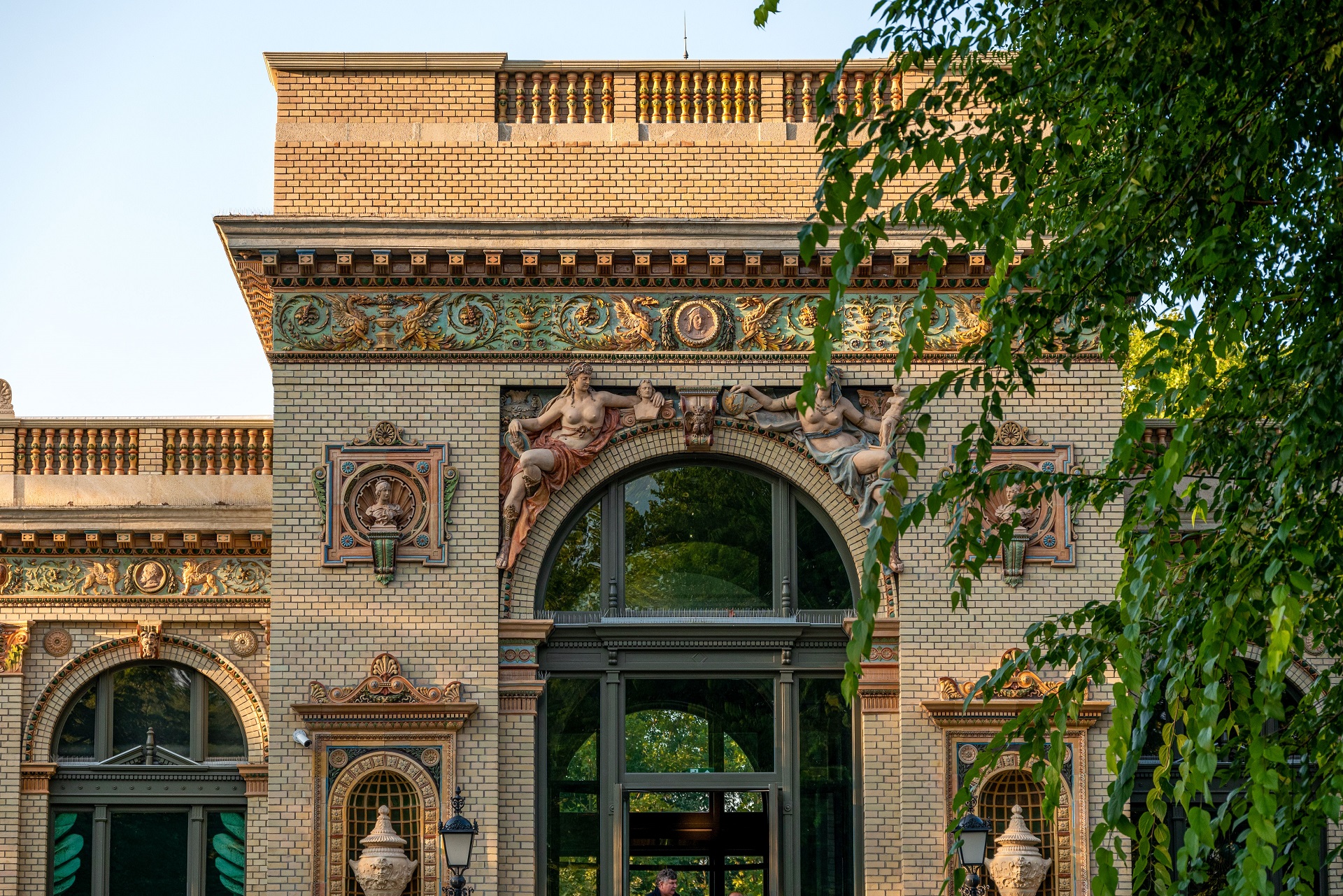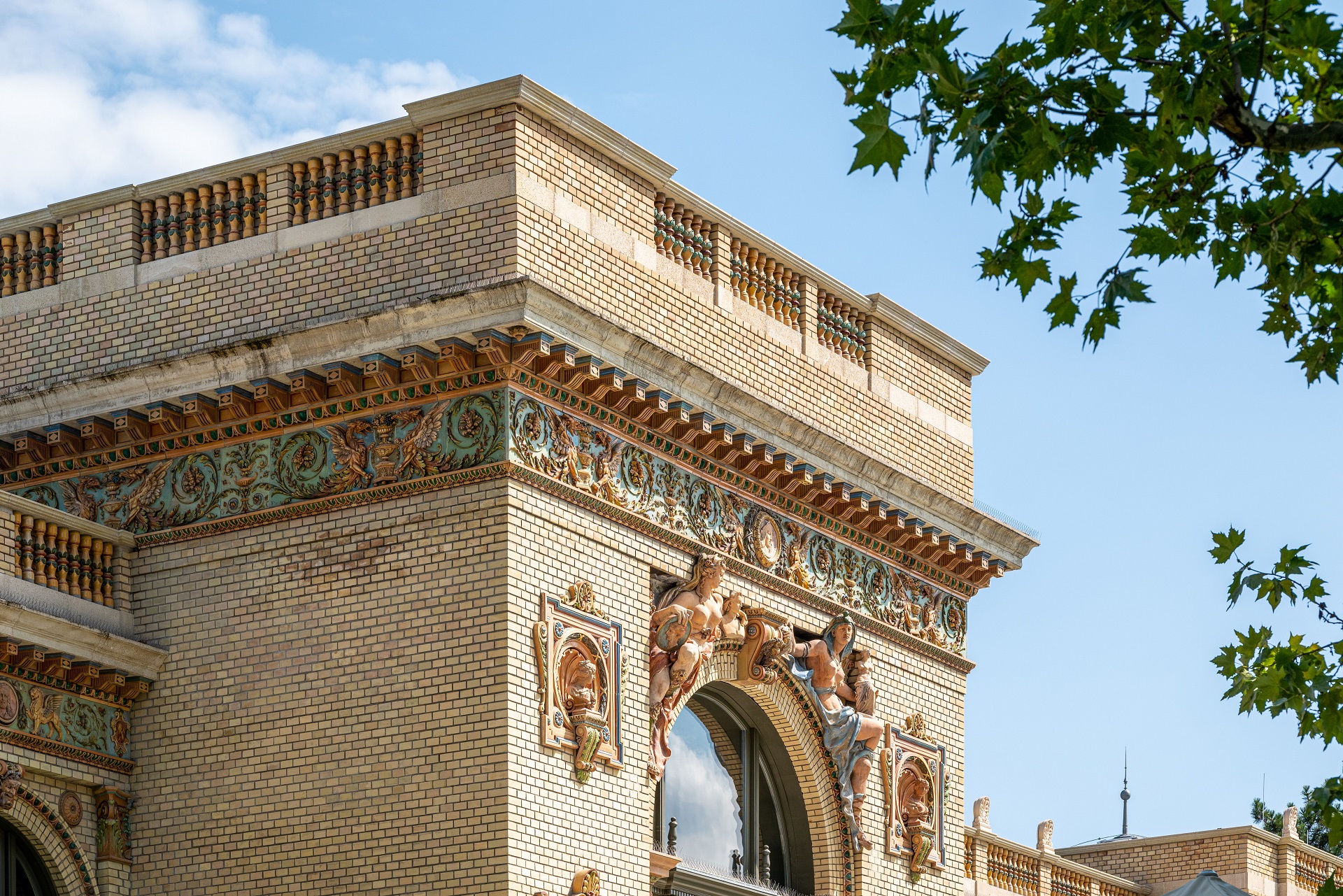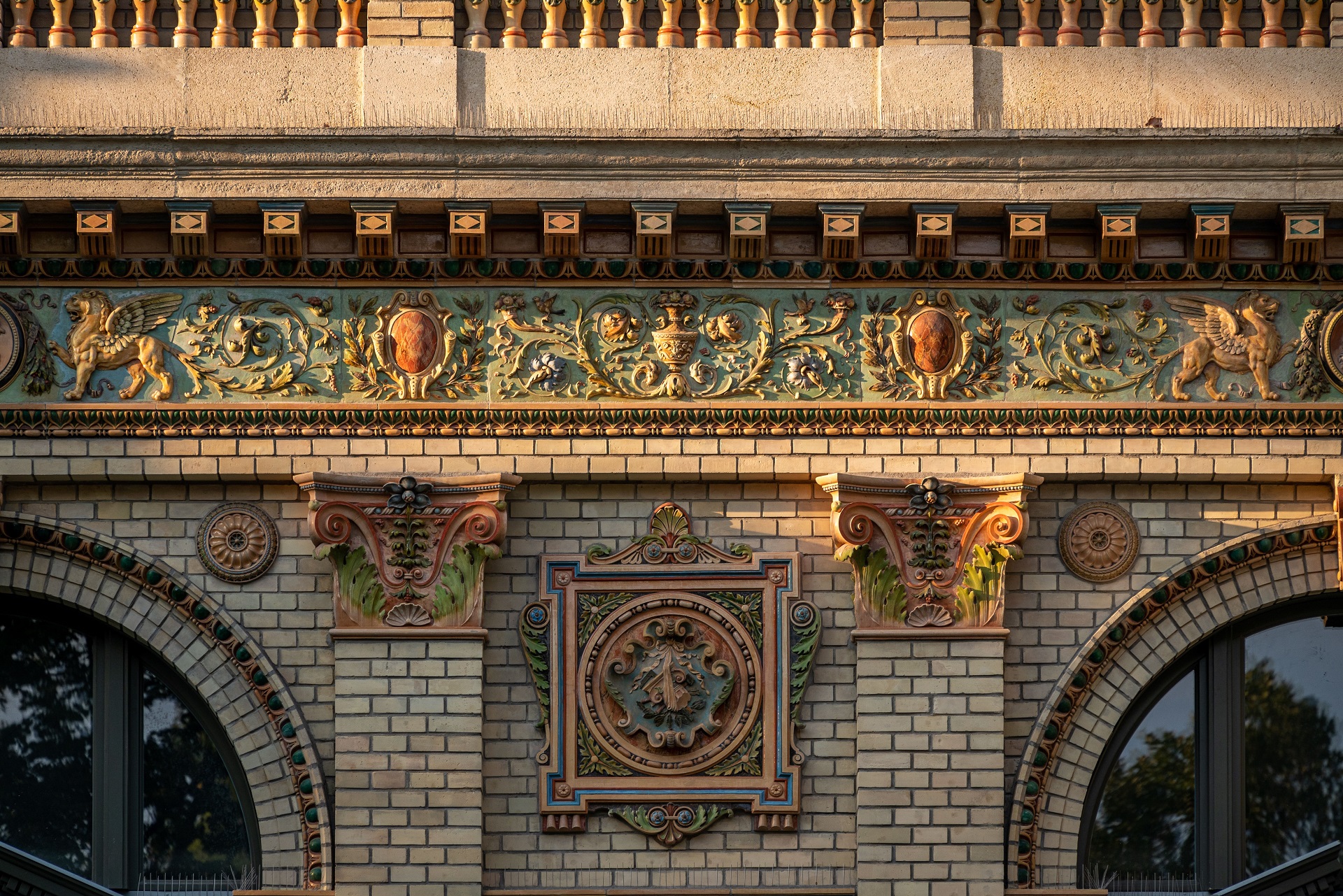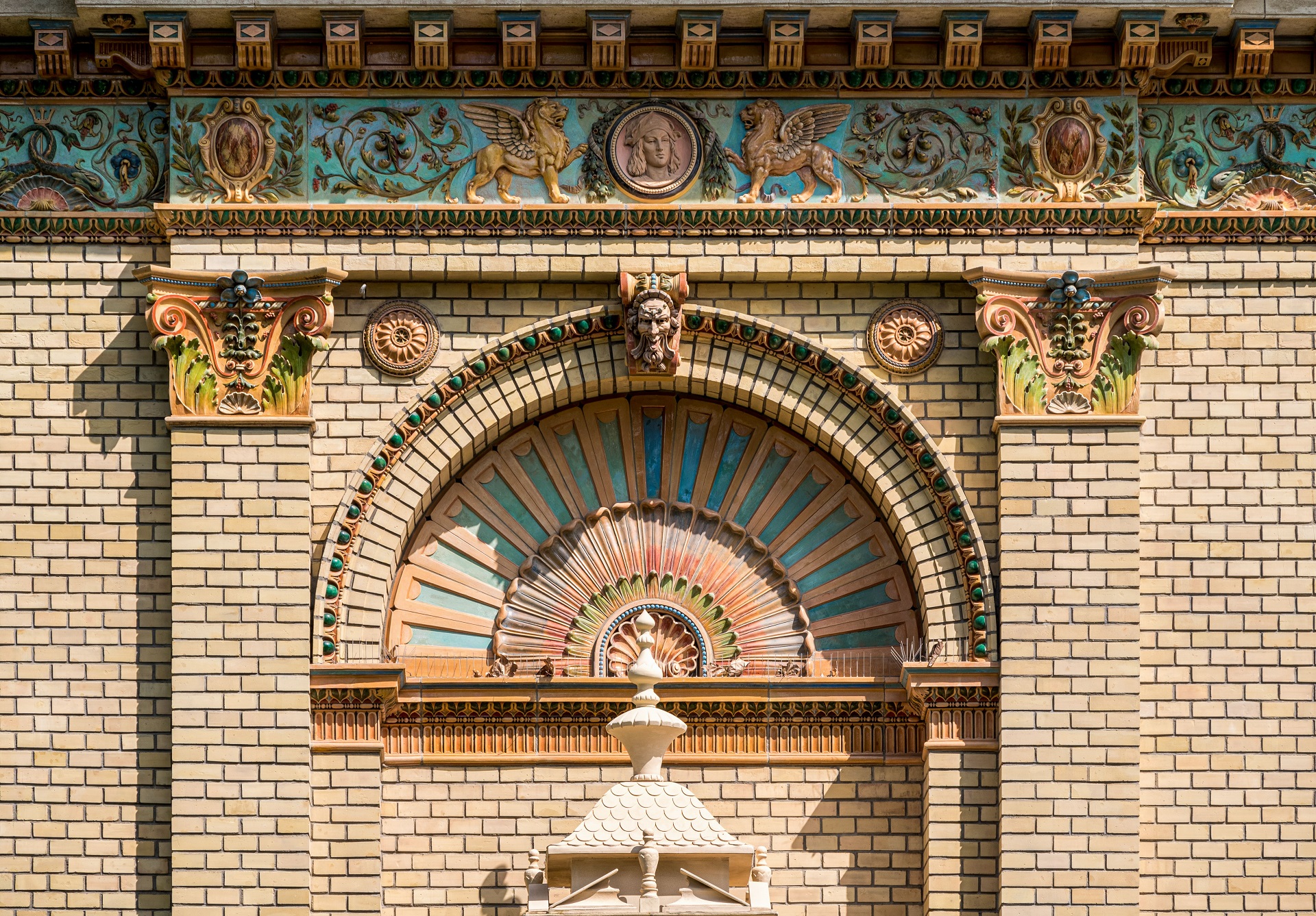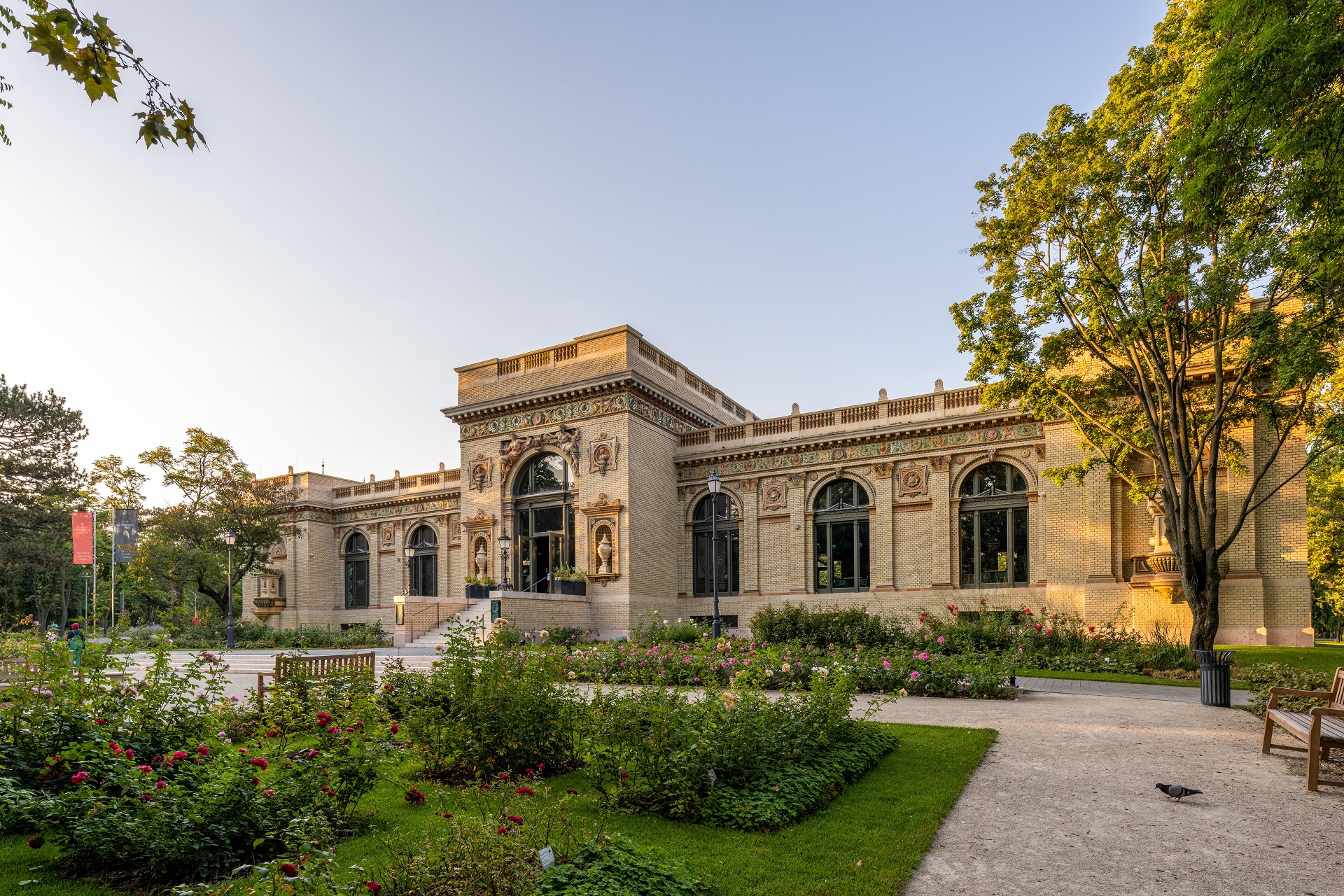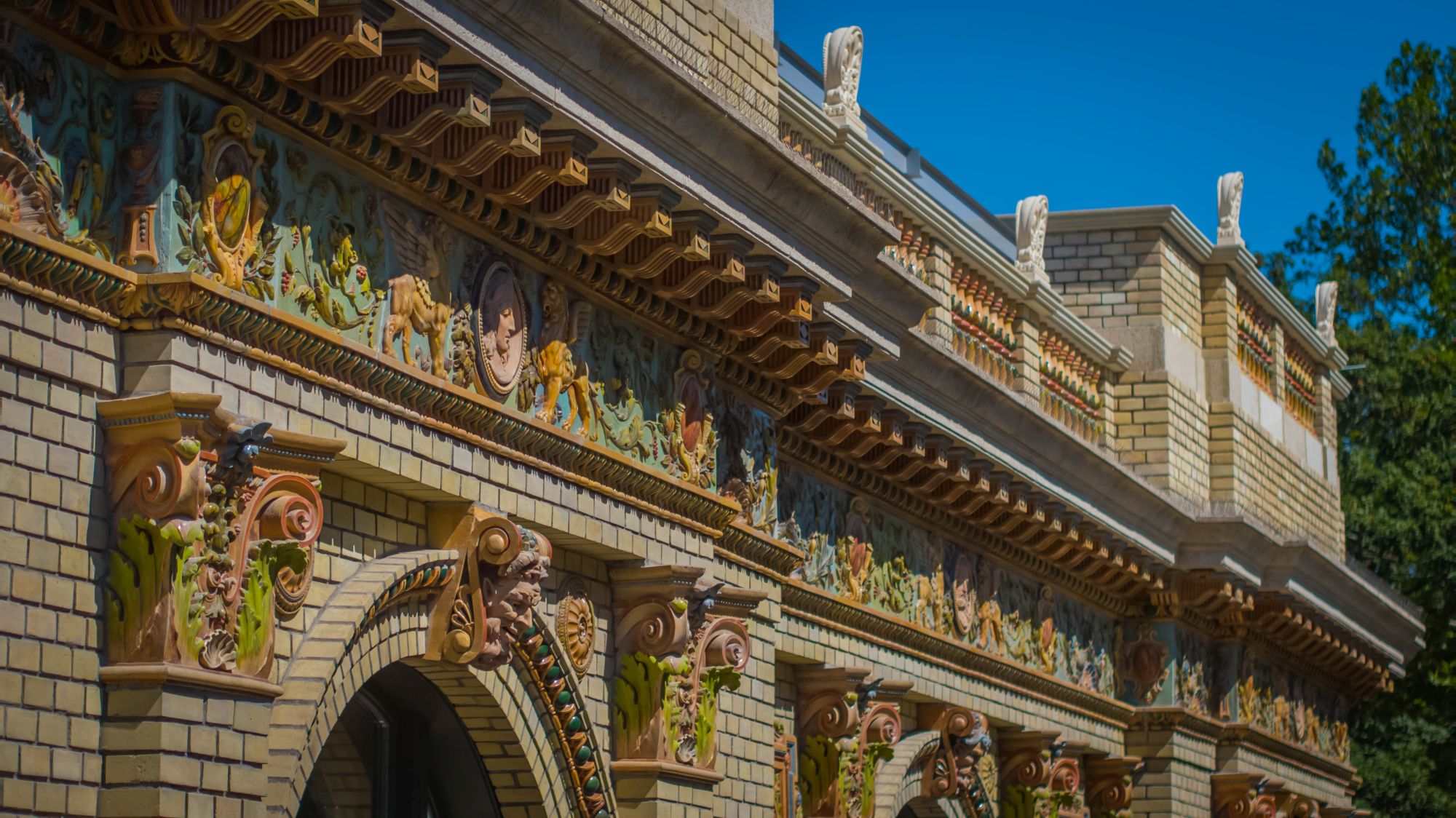
Zsolnay
The history of House of the Hungarian Millennium is closely connected to that of the Zsolnay Porcelain Factory. The original, but restored ceramic decorations adorn the facades of the building and also appear as tiles and ornaments in the restaurant, and on the fountain of the Rose Garden as well. The special artistry of Zsolnay is displayed in a small temporary exhibition cabinet showing a lot of masterpieces.
Exterior Decorations
In the 1880s multi-coloured ceramics were not often used as building decorations. A few decades later, in the period of Art Nouveau, howevere, they were used more frequently. The real breakthrough in the field of exterior decoration was the invention of the so calledpyrogranite, but that happened couple of years later. Vilmos Zsolnay, the founder of the Zsolnay Porcelain Factory just started experimenting pyrogranite at the time of the completion of the building, so in 1884-85 it was decorated with traditional lead-glazed majolica ornaments.
The period between the 1870s-1880s was characterized by the eclectic use of historical architectural styles, so was it in the case of the building in the City Park. Allegoric female figures in Egyptian and Greek style, Persian winged lions can also be found on the richly decorated facades. Between the floral ornaments, there are vases decorated with dragons as well as medallions with the portraits of the great Renaissance artists, Leonardo da Vinci, Raphael and Michelangelo.
The Zsolnay Fountain
The fountain facing the main entrance of the House of the Hungarian Millennium was inspired by the original drawings of the Zsolnay pattern book, combining the forms and patterns of the period. The glazing and colours are reproducing the fine details of the building.
Decorations of the Restaurant
The world famous Zsolnay porcelains and the design of exotic animals made ofceramics bring a specific, Art Nouveau-feel to the restaurant r. The huge bar is decorated with pyrogranite tiles of the Zsolnay factory.
